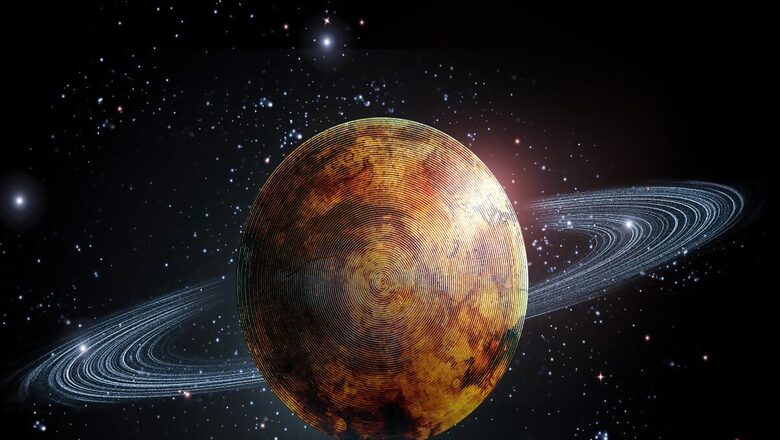
views
Researchers have pegged the planet Saturn’s rings’ age at no more than 400 million years old, potentially answering a question that has boggled scientists for well over a century. The study, led by physicist Sascha Kempf at the University of Colorado Boulder, US, said that it has delivered the strongest evidence yet that Saturn’s rings are remarkably young, much younger than Saturn itself, which is about 4.5 billion years old. The researchers arrived at this answer by studying tiny grains of rocky material washing through the Earth’s solar system on an almost constant basis. In some cases, they said, this flux can leave behind a thin layer of dust on planetary bodies, including on the ice that makes up Saturn’s rings.
In this study, Kempf and his colleagues set out to date these rings by studying how rapidly this layer of dust builds up. “Think about the rings like the carpet in your house,” Kempf said. “If you have a clean carpet laid out, you just have to wait. Dust will settle on your carpet. The same is true for the rings.”
Terming the process “ardous”, the team, from 2004 to 2017, used an instrument called the Cosmic Dust Analyzer aboard US’s NASA’s late Cassini spacecraft to analyse specks of dust flying around Saturn.
Based on calculations on the 163 grains collected over those 13 years, all of which had originated from beyond the planet’s close neighbourhood, Saturn’s rings have likely been gathering dust for only a few hundred million years.
The planet’s rings, on the other hand, are new phenomena, the researchers said, arising, and potentially even disappearing, in what amounts to a blink of an eye in cosmic terms.
“We still don’t know how these rings formed in the first place,” said Kempf. Today, scientists know that Saturn hosts seven rings comprised of countless chunks of ice, most no bigger than a boulder on Earth. Altogether, this ice weighs about half as much as Saturn’s moon Mimas and stretches nearly 2.8 lakh kilometres from the planet’s surface. The idea and the assumption which most 20th century scientists had that the rings likely formed at the same time as Saturn raised a few issues, namely that Saturn’s rings are sparkling clean, Kempf said.
“It’s almost impossible to end up with something so clean,” Kempf said.
The spacecraft Cassini first arrived at Saturn in 2004 and collected data until it purposefully crashed into the planet’s atmosphere in 2017. The Cosmic Dust Analyzer, which was shaped a bit like a bucket, scooped up small particles as they whizzed by.


















Comments
0 comment